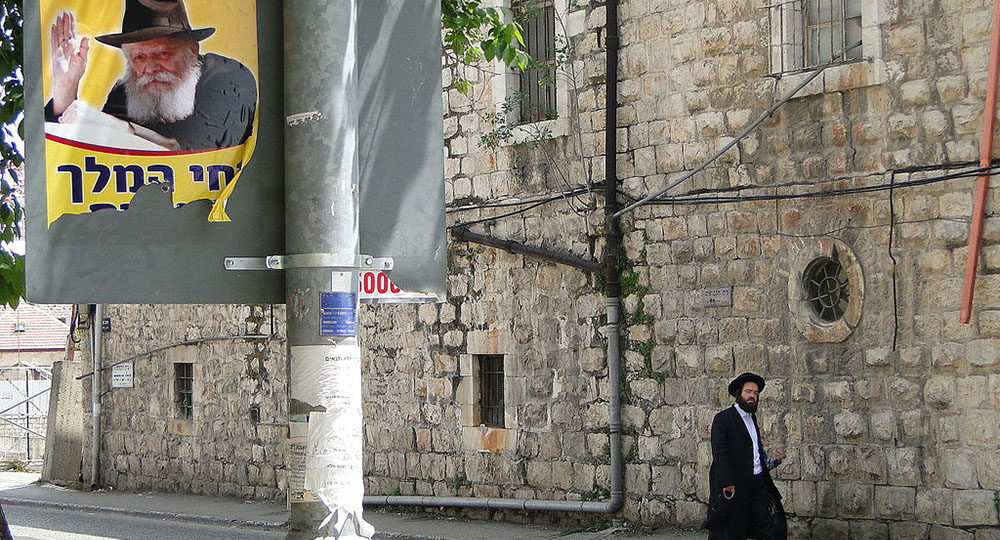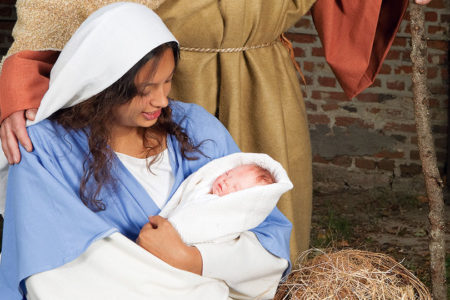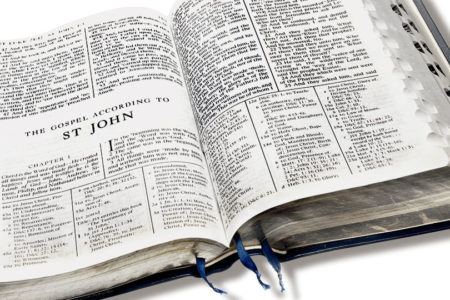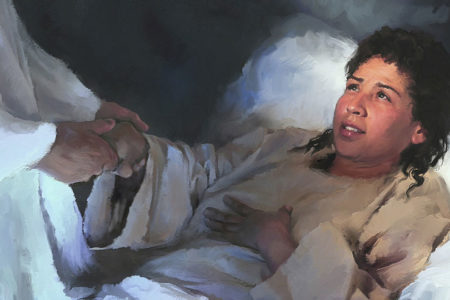The Great Admission
Messianic fervor hit a high throughout the Orthodox Jewish world in the early 1990s. Banners trumpeted messages like “Messiah Is Coming,” “We Want Messiah Now,” and “Prepare for Messiah” throughout Jerusalem; and billboards did the same in large cities in the United States and Canada. The Jewish community was abuzz.
Even secular newspapers, magazines, and syndicated columns were asking, “Who is behind these posters, and who is the Messiah?”
Producing the banners and billboards was the Chabad Lubavitch, a Hasidic (ultra-Orthodox) Jewish sect headquartered in Crown Heights, New York. Originating in a small Russian shtetl (community) in 1775, the Lubavitch managed to survive horrendous persecutions in Europe, including the Holocaust; and by the early 1990s under the leadership of Rabbi Menachem Mendel Schneerson, it had become the fastest-growing sect within Judaism.
Rabbi Schneerson’s picture appeared in store windows, on buildings and buses, and in newspapers throughout Jerusalem. The Rebbe, as he was called, is said to have performed hundreds of miracles and possessed Solomon-like wisdom and compassion for the oppressed.
He held audiences with presidents and prime ministers, governors and congressmen; and though he was not born in Israel and never even visited there, most of his followers hailed him as the Messiah. He neither acknowledged nor denied the claim.
Schneerson died in 1994. However, many of his followers expected him to rise from the dead; and to this day, many Lubavitch believe he is coming back.
Most Jewish people do not believe Schneerson was the Messiah. Nor do they believe Jesus was. In fact, many will tell you that, like Rabbi Schneerson, Jesus neither affirmed nor denied His Messiahship. But the Bible teaches otherwise.
No banners proclaimed Jesus’ coming 2,000 years ago. Yet Messianic fervor was rampant. Throughout Judea, Samaria, and Galilee, news spread of a great rabbi named Yeshua (Jesus). He performed great miracles (Acts 2:22), possessed greater wisdom than Solomon (Mt. 12:42; Lk. 11:31), and demonstrated profound kindness and compassion.
But unlike Rabbi Schneerson, Jesus met all the specific Messianic criteria established in God’s Word: He was born of a virgin in Bethlehem of Judea, a direct descendant of King David from the tribe of Judah (Isa. 7:14; Mic. 5:2). And, contrary to what some say, He acknowledged He was the promised Messiah.
The Gospel of John records that Jesus made Himself clear to a Samaritan woman as He traveled through Samaria from Judea to Galilee. No Jewish man in those days, especially a rabbi, intentionally walked through Samaria or talked to Samaritan women (Jn. 4:9). But Jesus was different. He did not follow social etiquette or miss divine appointments.
He asked the woman for a drink and spoke of “water springing up into everlasting life” (v.14). After gaining her attention by accurately describing her life (vv. 15–18), Jesus shared with her how “salvation is of the Jews” (v. 22).
She understood the Jewish concept of Messiah: “I know that Messiah is coming….When He comes, He will tell us all things” (v. 25).
To which Jesus replied, “I who speak to you am He” (v. 26).
Not only did Jesus admit He was the Messiah, but He also admitted He was God. His exact words were, “I who speak to you, I Am.” They were reminiscent of the words God spoke to Moses at the burning bush when He said, “I AM WHO I AM….Thus you shall say to the children of Israel, ‘I AM has sent me to you’” (Ex. 3:14).
This was not the only time Jesus used the words I Am to declare His deity. In speaking to the Pharisees, He declared, “Most assuredly, I say to you, before Abraham was, I AM” (Jn. 8:58).
Jesus also acknowledged His Messiahship to His disciples in Caesarea Philippi. He asked, “Who do men say that I, the Son of Man, am?” (Mt. 16:13). The disciples responded that some said He was John the Baptist, Elijah, Jeremiah, or one of the prophets. “But who do you say that I am?” He asked (v. 15).
Simon Peter answered, “You are the Christ [Messiah], the Son of the living God” (v. 16).
Jesus replied, “Blessed are you, Simon Bar-Jonah, for flesh and blood has not revealed this to you, but My Father who is in heaven” (v. 17). Jesus acknowledged that Peter was correct in calling Him the Messiah and told Peter his knowledge came directly from God the Father.
Though Peter receives most of the theological press for recognizing Jesus as the Messiah, Martha’s response was equally dramatic. When Lazarus died, his sister Martha came to Jesus, saddened that the Lord had not been there to heal him. Jesus told her Lazarus would rise again. Martha agreed he would indeed rise in the resurrection.
Jesus declared, “I am the resurrection and the life. He who believes in Me, though he may die, he shall live. And whoever lives and believes in Me shall never die. Do you believe this?” (Jn. 11:25–26). Jesus thus admitted His identity as both Messiah and God.
Martha’s response was thrilling: “Yes, Lord, I believe that You are the Christ, the Son of God, who is to come into the world” (v. 27). She called Him Lord, Christ (Messiah), and Son of God, revealing her deep faith.
On the day Jesus would be crucified, He was brought before Caiaphas the high priest, who declared, “I put You under oath by the living God: Tell us if You are the Christ, the Son of God!” (Mt. 26:63).
Jesus replied, “It is as you said,” admitting His Messiahship. He then added, “Nevertheless, I say to you, hereafter you will see the Son of Man sitting at the right hand of the Power, and coming on the clouds of heaven” (v. 64).
That encounter was the defining moment for the rejection of Jesus as Messiah. The high priest tore his clothes (in violation of Jewish law) and declared no further need for witnesses (v. 65). The Jewish leadership clearly understood Jesus’ claim to be both Messiah and God and declared Him guilty of blasphemy, which was punishable by death.
Today there are Lubavitcher Jews who check Rabbi Schneerson’s grave daily, hoping for his resurrection, even though he failed to meet the biblical standards for the office of Messiah.
In contrast, Jesus stood before the Jewish leaders of His day, having met all of the criteria; and they refused to recognize Him. Instead, He was shamed, beaten, and sentenced to death.
Though Schneerson’s body still lies in the ground, Jesus rose from the grave and sits in heaven at the right hand of the Father until His enemies become His footstool (Ps. 110:1).
The Hebrew Scriptures declare, “Kiss the Son, lest He be angry, and you perish in the way….Blessed are all those who put their trust in Him” (2:12).
It is not that Jesus failed to acknowledge who He was; it is that people then, as today, refuse to believe.







